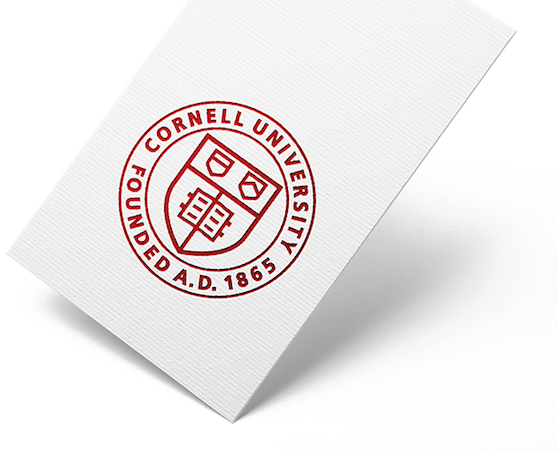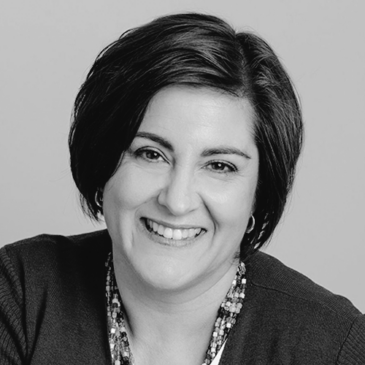Diane Burton is a professor in the ILR School at Cornell University. Her primary appointment is in human resource studies, with courtesy appointments in organizational behavior and sociology. Prior to joining the Cornell faculty in 2009, Professor Burton was a faculty member at the MIT Sloan School of Management. She began her academic career at the Harvard Business School teaching leadership and organizational behavior. Professor Burton earned her Ph.D. in sociology at Stanford University and served as a lecturer and researcher in organizational behavior and human resources management at the Stanford Graduate School of Business.
Request More Info
Overview and Courses
We live in a volatile, ever-changing world and yet the organizations in which we work are typically slow to evolve. How organizations are structured and how successful they are in adapting to change has a significant impact on the organizational health of the enterprise, and on the people within it. In this certificate program, you will be introduced to the field of organizational design, discovering how to identify different organizational structures and examine how they may be restructured to become more agile and successful amid industry, societal, and environmental change.
Through these courses, you’ll explore conceptual frameworks and adopt the terminology used by professionals as you examine the array of organizations you interact with in your life. Practical projects will enable you to dive deeper as you analyze your own organization through these lenses. You will also gain perspective on the process of redesign and the ecosystems in which organizations are seated, assessing industry classification systems along with the roles of collaboration and competition. By applying different models of organizational design, you will be able to quantify and benchmark formal structural attributes of an organizational unit. Finally, you will practice integrating management systems, people practices, and culture with an organizational structure to achieve desired outcomes in your current role and beyond.
The courses in this certificate program are required to be completed in the order that they appear.
Course list
Organizations are so entrenched in our everyday lives that we often don't notice them. Each of us exists within a unique ecosystem of organizations that include where we work, shop, go to school, volunteer, acquire healthcare, and manage our personal and professional lives. Becoming aware of the ways that these organizations are structured and the choices behind these structures are fundamental skills necessary for organizational design.
In this course, you'll analyze an organization in terms of how it is structured, what it does, and how it interacts within the larger ecosystem. You'll develop ways of thinking about these categories and the language you'll need to describe them, whether you are focusing on organizations in your immediate neighborhood or global organizations. Description is the first step. You will also develop the analytical skills to explain, from an organizational design perspective, why some organizations function more successfully than others so you can anticipate future changes that may create a need for redesign.
Organizational design professionals use different models to assess organizations. In this course, you'll practice using the Congruence Model to assess whether an organization is well designed. By combining all the skills you develop in this course, you will be able to look critically at organizations to identify their key components, understand how they are related, and assess whether the organization would benefit from a redesign.
- Aug 6, 2025
- Oct 1, 2025
- Nov 26, 2025
- Jan 21, 2026
- Mar 18, 2026
- May 13, 2026
An organization doesn't exist in a vacuum. In most cases, every organization is part of a larger industry, engaged in collaborative and competitive interactions with other organizations. Organizational designers rely on a common nomenclature to describe how organizations fit within their ecosystem.
In this course, you'll take a look at the broader contexts — the ecosystems — in which organizations function. You'll articulate and analyze the different dimensions of this bigger picture. You'll also explore the various strategies that organizations tend to rely on for growth as well as the design implications of these strategic choices. The course brings together perspectives from different and complementary disciplines to provide a multifaceted approach which you will use to assess your own organization and where it fits within the larger context.
You are required to have completed the following course or have equivalent experience before taking this course:
- Fundamentals of Organizational Design
- Aug 20, 2025
- Oct 15, 2025
- Dec 10, 2025
- Feb 4, 2026
- Apr 1, 2026
- May 27, 2026
Have you ever wondered why any organization you are affiliated with — be it academic, nonprofit, governmental, or business — is set up the way that it is? Chances are that decisions about how to structure your organization were made in the distant past, under conditions that no longer exist, in response to concerns that are no longer relevant. These choices make a difference in terms of how an organization works as well as how it feels to be a customer or an employee.
In this course, you will take a look at the elements of formal structure — how an organization is set up in order to achieve its goals. Looking through the organizational design lens, you will begin to evaluate how each structural decision impacts the overall organization. How does the work get done? How do employees communicate — or fail to communicate? You'll dive down to the unit level to assess workplace challenges that may be the result of formal structural choices.
Finally, you will have the opportunity to address workplace challenges using an objective, analytical approach and create alternative design proposals to address these challenges.
You are required to have completed the following courses or have equivalent experience before taking this course:
- Fundamentals of Organizational Design
- Assessing Organizations in Context
- Jul 9, 2025
- Sep 3, 2025
- Oct 29, 2025
- Dec 24, 2025
- Feb 18, 2026
- Apr 15, 2026
- Jun 10, 2026
In times of change, organizational designers may respond by proposing modifications to the formal structure of an organization, perhaps by adding new divisions, changing the vertical hierarchy, or adopting alternatives to the traditional structures. While these are all methods of adjusting the formal structure of an organization, sometimes it is not feasible to make changes to the formal structure of an organization.
In such cases, an organizational designer may choose to use policies, systems, practices, and culture to overcome the limitations of formal organizational structure. The proper adjustments to these powerful mechanisms can enhance organizational effectiveness and achieve desired outcomes by linking groups and activities.
In this course, you will review research-based approaches to redesigning policies, systems, and practices to better manage your business and your workforce. You will consider which policies, systems, and practices to change and which to leave alone based on examples of real-world success and not-so-successful stories from companies around the globe. You'll also gain the skills you need to analyze organizations as social entities and consider ways you can use things like social capital, organizational culture, and informal groups to smooth the work functions. Finally, you will consider ways to combine and align these integration mechanisms — policies, systems, practices, and culture — to solve a specific organizational issue. You'll also look critically at some of the latest fads or trends in organizational design.
You are required to have completed the following courses or have equivalent experience before taking this course:
- Fundamentals of Organizational Design
- Assessing Organizations in Context
- Analyzing Formal Organizational Structure
- Jul 23, 2025
- Sep 17, 2025
- Nov 12, 2025
- Jan 7, 2026
- Mar 4, 2026
- Apr 29, 2026
- Jun 24, 2026
Request more Info by completing the form below.
How It Works
- View slide #1
- View slide #2
- View slide #3
- View slide #4
- View slide #5
- View slide #6
- View slide #7
- View slide #8
- View slide #9
Faculty Authors
Pedro Pérez is Senior Lecturer of Applied Economics and Management at Cornell’s SC Johnson College of Business. He has taught large-format introductory courses to business management and entrepreneurship at Cornell since 2001. Dr. Pérez has degrees in chemical and industrial engineering, as well as an MBA and a Ph.D. in management.
Key Course Takeaways
- Design or redesign an effective organizational structure
- Implement policies and processes that help an organization operate at its best
- Explore organizations as complex, multilayered, and dynamic systems
- Allocate people, resources, and capital within an organization

Download a Brochure
Not ready to enroll but want to learn more? Download the certificate brochure to review program details.
What You'll Earn
- Organizational Design Certificate from Cornell’s ILR School and Dyson School
- 40 Professional Development Hours (4 CEUs)
- 40 Professional Development Units (PDUs) toward PMI recertification
- 40 Professional Development Credits (PDCs) toward SHRM-CP and SHRM-SCP recertification
- 40 Credit hours towards HRCI recertification
Who Should Enroll
- Organizational design managers
- Executives (CEOs, VPS, division leaders, functional leaders)
- Merger and acquisition managers
- Corporate consultants
Explore Related Programs

“eCornell puts you in control of your education entrepreneurship. It allows you to choose what you need to learn and how you need to learn it at the right time.”
Request Information Now by completing the form below.

Organizational Design
| Select Payment Method | Cost |
|---|---|
| $3,900 | |






















































